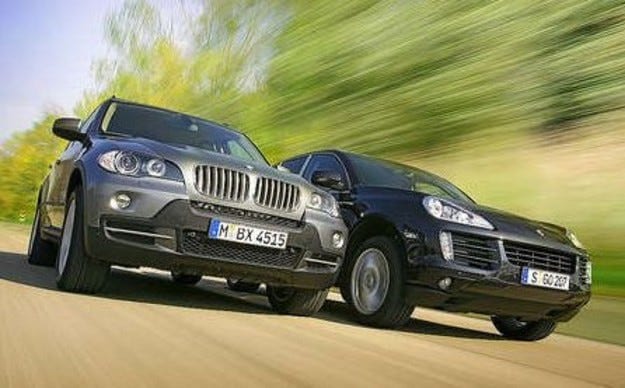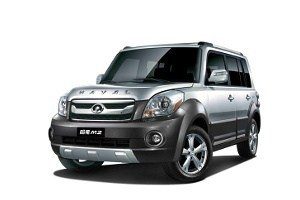
Test drive BMW X5 4.8i vs Porsche Cayenne S: big game
Content

The V8 models of the BMW X5 4.8i and Porsche Cayenne S are vying for supremacy among sports full-size SUVs, and the result of the comparison test is somewhat surprising.
After a generational change at BMW and a major facelift at Porsche, both models are even more extreme than before. Moreover, the suspensions of the two giants have undergone very serious changes. BMW now offers the X5 4.8i at an additional cost with Adaptive Drive, which features adaptive damping and side stabilizer controls. The Cayenne has similar capabilities with the PASM active suspension and PDCC dynamic chassis control.
Two heavyweight athletes who move with amazing ease
The question remains whether the engineering genius was able to at least partially overcome the laws of physics. However, both cars have a monstrous weight - 2,3 tons for the BMW and almost 2,5 tons for the Porsche, and in addition, the center of gravity is sharply shifted upward due to a ground clearance of about 20 centimeters and a body length of approximately 1,70 meters. As incredible as it may sound, in the slalom, ISO and VDA road stability tests, both cars achieved comparable times to one. Ford Focus ST for example!!!
What happens if you use the full power of the V8 X5 engine? A very light movement of the accelerator pedal is enough, and the massive body is thrown forward with unexpected fury. The 4,8-liter engine shows serious fuel traction - the average consumption in the test showed 17,3 liters per 100 km - a high, but not unexpected value for such a car. The Cayenne looks similar - its naturally aspirated V8 with direct fuel injection is indeed about a liter per hundred kilometers more economical than its predecessor, but at an average consumption of 17,4 l / 100 km for economy in the conventional sense. this expression doesn't make any sense... The giant Porsche accelerates with Bavarian-like agility, and the differences in road safety are also small.
Good comfort looks different
Riding comfort is definitely not among the parade disciplines of the test duo. Despite modern adaptive air suspension control systems (which BMW only has on the rear axle), bumps are difficult to overcome. The mediocre driving comfort is in no way affected by which suspension mode is currently activated. However, the Cayenne may be slightly more passenger-friendly than the X5, but both models have a rule that precision and sporty cornering are at the expense of comfort.
In the end, the X5 took the overall win mainly due to the lower price, although overall the two machines performed about the same good level. However, this test proves once again that the limits of physics are something that cannot be overcome or bypassed. Despite the excellent dynamics on the road, these two models make a very serious compromise with comfort.
Text: Christian Bangeman
Photo: Hans-Dieter Zeifert
Evaluation
1.BMW X5 4.8i
There is no other SUV that drives as nimble on the road as the X5 – the ease with which the car follows every movement of the steering wheel is truly amazing. The drive also works great. However, ride comfort is mediocre and fuel consumption is high.
2. Porsche Cayenne S
The Cayenne is an impressively agile vehicle with a very high level of active safety. Comfort is limited, but still better than the X5. However, the price of one idea is higher than necessary.
technical details
| 1.BMW X5 4.8i | 2. Porsche Cayenne S | |
|---|---|---|
| Working volume | - | - |
| Power | 261 kW (355 hp) | 283 kW (385 hp) |
| Maximum torque | - | - |
| Acceleration 0-100 km / h | 6,8 with | 6,6 with |
| Braking distances at a speed of 100 km / h | 38 m | 38 m |
| full speed | 240 km / h | 250 km / h |
| Average consumption fuel in the test | 17,3 l / 100 km | 17,4 l / 100 km |
| Base Price | - | - |
